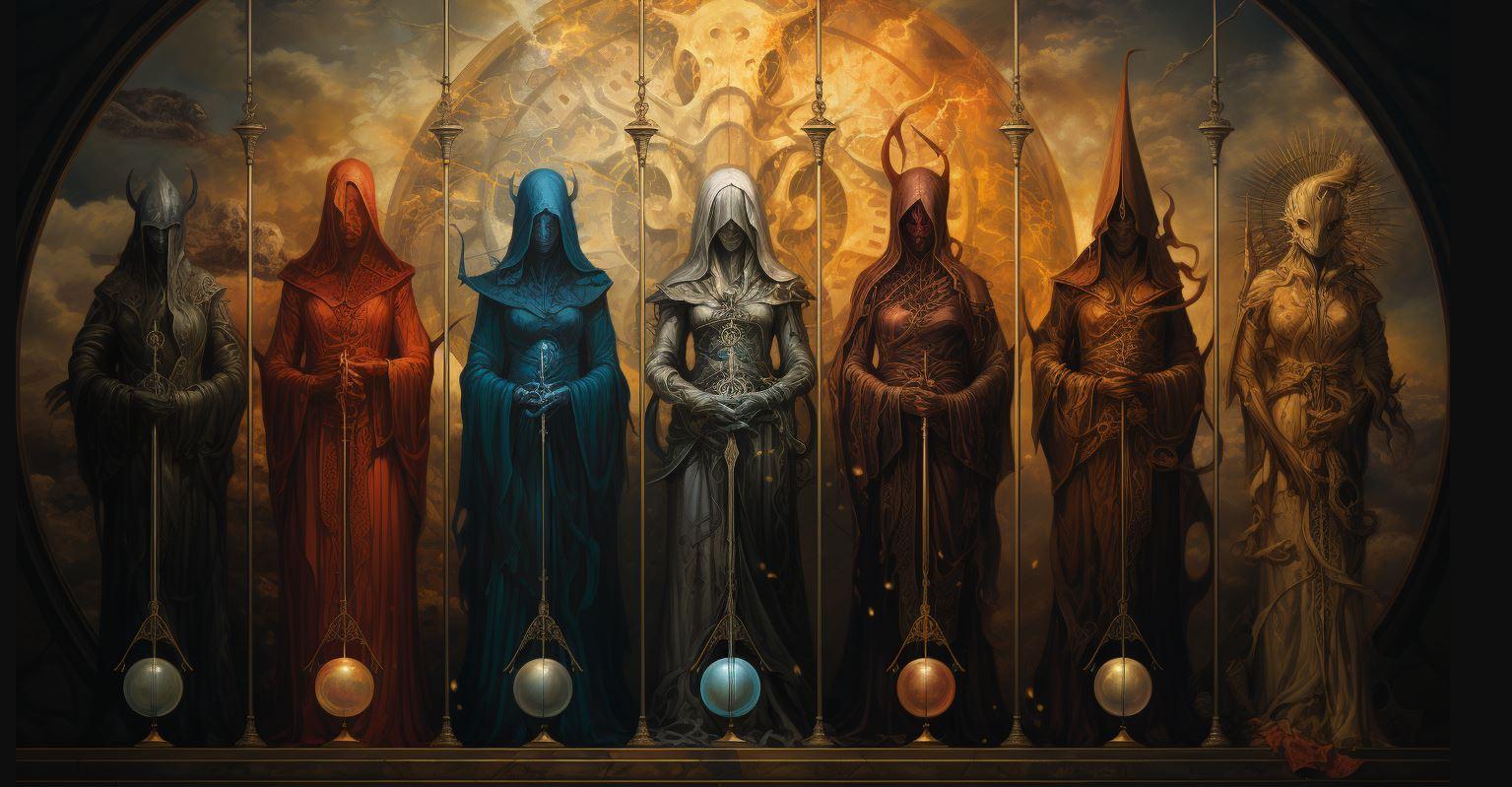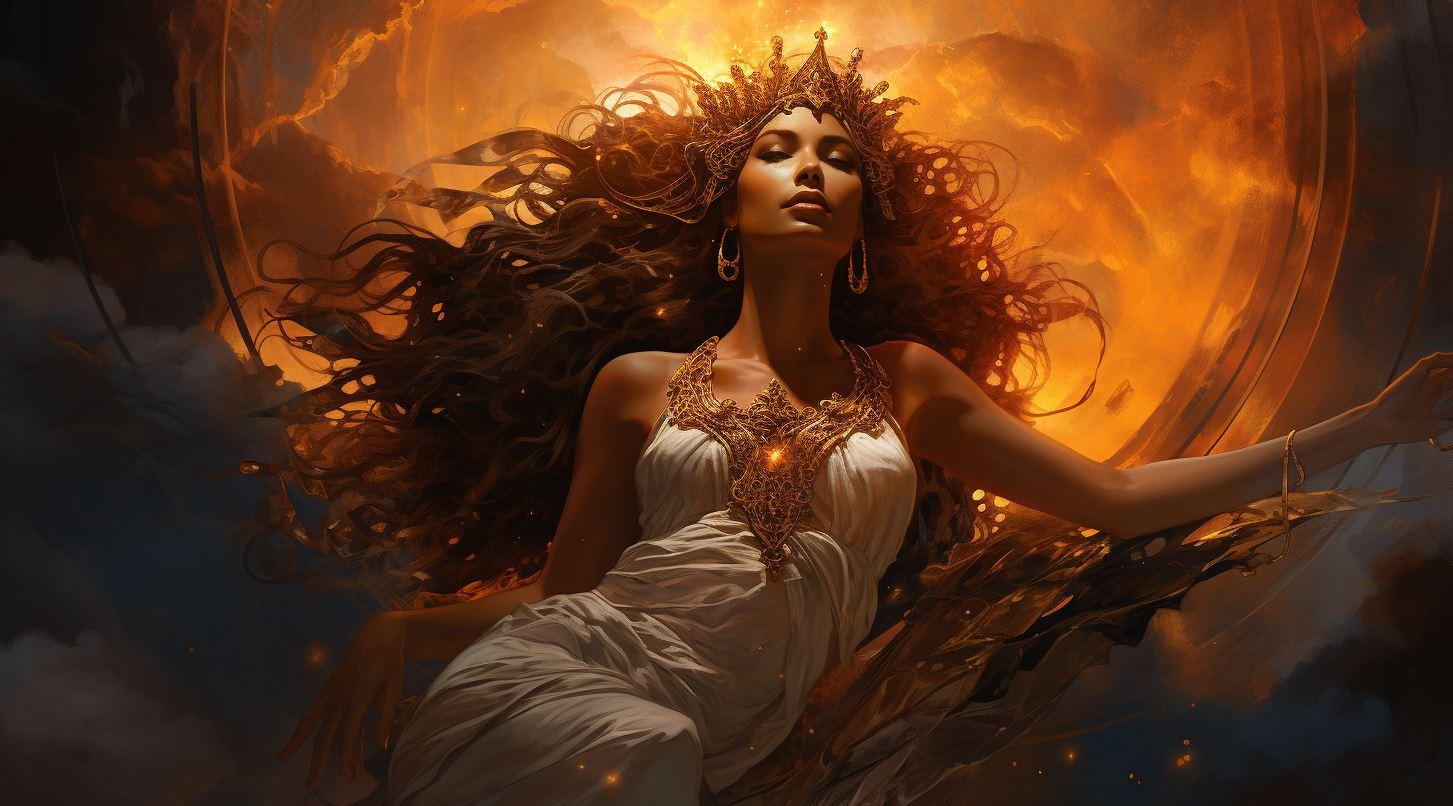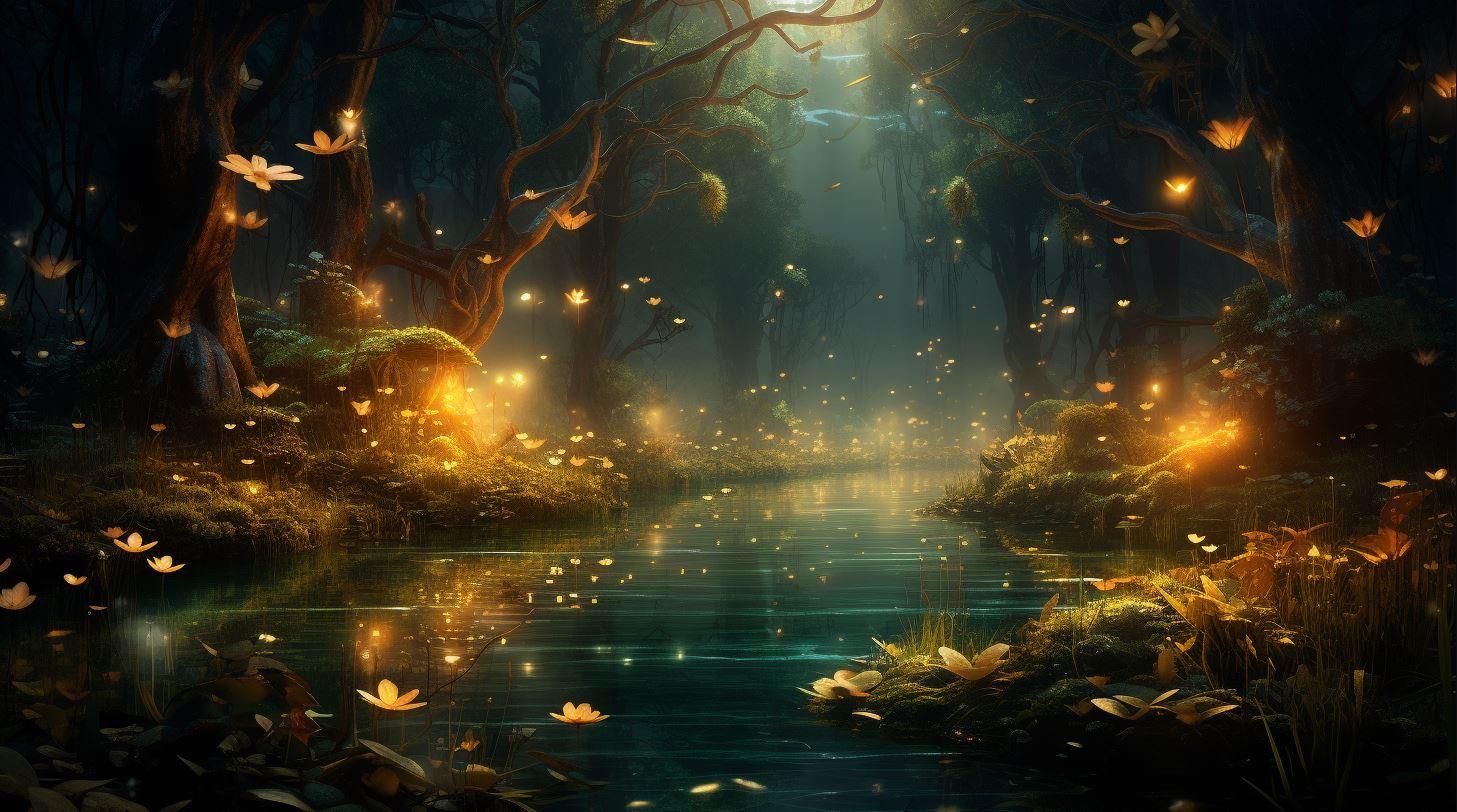Persian Gods and Goddesses: Unveiling the Ancient Deities of Iran’s Rich Religious History
The article provides a brief overview of Persian gods and goddesses in ancient Iranian mythology. It discusses the significance of deities like Ahura Mazda and Mithra, as well as the worship of lesser gods.
The concept of dualism and the belief in the inherent goodness of humanity are also mentioned. The article delves into the rituals and practices associated with Persian religion, and highlights the close connection between religion and politics in Persian empires.
Additionally, it addresses common misconceptions and FAQs about Persian gods and goddesses.
Overview of Persian Gods and Goddesses
Welcome to the captivating world of Persian gods and goddesses, where ancient mythologies unfold. In this section, we delve into the mystical realm of Iranian religion, exploring the divine entities revered by the ancient Iranians.
The pantheon of Persian gods and goddesses reflects the rich tapestry of beliefs and spiritual practices of ancient Iran. From the revered Ahura Mazda, the supreme god associated with wisdom and creation, to Mithra, the radiant Sun god symbolizing loyalty and justice, each deity has a unique role and significance in the intricate fabric of Persian mythology.
List of Persian Gods and Goddesses
Beyond these prominent figures, the Persian pantheon also includes a myriad of lesser gods and goddesses who personify various aspects of nature, fertility, and protection.Their stories intertwine, giving rise to a complex tapestry of divine powers and cosmic forces.
In this section, we will explore the concept of dualism, which forms a fundamental aspect of Persian mythology, as well as the beliefs surrounding the essential goodness of humanity. We will also uncover the rituals and practices that adorned the religious lives of ancient Iranians and delve into the profound influence of religion on politics and society in Persian empires.
Join us on this enlightening journey through the world of Persian gods and goddesses, where ancient wisdom and divine tales await your discovery.
Introduction to Ancient Persian Mythology
In ancient Iranian culture, Persian mythology played a significant role in shaping the beliefs and practices of the people. It offered a rich tapestry of gods and goddesses, each with their unique attributes and roles within the celestial hierarchy.
Persian mythology served as a pathway to understanding the fundamental principles and values that guided the lives of the ancient Iranians.
At the heart of Persian mythology lies a complex interplay between various deities, symbolic representations, and mythical narratives. These narratives often explored themes of creation, cosmic order, and the eternal struggle between good and evil.
Persian mythology also depicted a pantheon of gods and goddesses, each associated with different aspects of the natural world, society, and human experience.
Through the stories and legends, ancient Iranians sought to make sense of their existence, find moral guidance, and connect with the divine. These tales wove together a cultural fabric that defined the identities, rituals, and cosmology of the ancient Persian civilization.
This section of the article delves deeper into the enchanting world of ancient Persian mythology, shedding light on the deities, their roles, and the captivating stories that have endured through generations.
Get ready to embark on a journey through time and uncover the fascinating tales that shaped the religious and cultural landscape of ancient Iran.
The Role of Ahura Mazda in Iranian Religion
Ahura Mazda, the supreme deity of ancient Iranian religion, played a vital role in the belief system of the Persian people. As the embodiment of light, wisdom, and truth, Ahura Mazda was revered as the creator and protector of all that is good in the universe.
According to Iranian mythology, Ahura Mazda represented the forces of order, righteousness, and justice. He was considered the ultimate source of all good thoughts, words, and actions, serving as a beacon of moral guidance for worshippers.
Devotees believed that Ahura Mazda maintained a constant battle against Angra Mainyu, the personification of evil and chaos. This eternal conflict between good and evil formed the basis of the dualistic nature of Iranian religion.
Ahura Mazda was often depicted as a majestic figure, radiating divine light, and adorned with symbols of power and wisdom. Temples were constructed in his honor, and priests, known as magi, conducted elaborate rituals to commune with and seek the blessings of this supreme deity.
Worship of Ahura Mazda extended beyond religious spheres and permeated various aspects of Persian society. His elevated status allowed him to become the chief god during the Achaemenid period, receiving official patronage and support.
The profound influence of Ahura Mazda in Iranian religion reflects the enduring belief in the inherent goodness of humanity and the constant pursuit of righteousness.
Mithra: The Sun God in Persian Mythology
In Persian mythology, Mithra holds a significant place as the ancient sun god. Representing truth, contracts, and the cosmic order, Mithra‘s prominence in Persian religion is deeply rooted in their belief system.
Known as the radiant one, Mithra is often depicted with a radiant halo surrounding his head, symbolizing the sun’s powerful rays.
As the Persian sun god, Mithra played a vital role in the daily lives of ancient Iranians. With the sun representing life, warmth, and illumination, Mithra embodied these qualities and became associated with divine protection and the forces of creation.
Worshippers believed that Mithra‘s divine presence blessed the earth with fertility and productivity, granting them prosperity and abundance.
Mithra‘s worship was accompanied by elaborate rituals and ceremonies, often held in open-air sanctuaries. Followers participated in sacred performances, including the offering of prayers and sacrifices, to honor and appease Mithra.
These rituals reinforced the cosmic order and strengthened the connection between mortals and the divine.
Due to its association with the sun, Mithra‘s cult also played an essential role in marking the changing seasons and agricultural cycles. Celebrations and festivals dedicated to Mithra were held during significant cosmic events, such as the solstices and equinoxes, reflecting the profound influence of the sun god in Persian society.
The worship of Mithra endured for centuries and influenced neighboring cultures and religions. The legacy of Mithraic belief systems can be traced in various ancient societies, leaving an indelible mark on religious practices and mythological traditions.
Lesser Gods and Goddesses in Persian Pantheon
In addition to the prominent deities like Ahura Mazda and Mithra, the Persian pantheon encompassed numerous lesser gods and goddesses who played essential roles in ancient Iranian mythology. These divine beings were revered for their unique powers and influence over different aspects of life.
One significant lesser god in the Persian pantheon was Atar, the deity presiding over fire and the essence of life. Atar was believed to bring warmth, light, and purification, making his worship vital for maintaining the harmony and wellbeing of the community.
He was frequently invoked in rituals and ceremonies, symbolizing the sacred fire that connected mortals with the divine realm.
Another notable goddess was Anahita, associated with fertility, water, and healing. She was revered as the provider of abundance and prosperity, and her worship involved rituals conducted near springs or rivers.
Anahita‘s role in reinvigorating nature and bringing blessings to humanity made her a revered figure among the ancient Iranians.
- Tishtrya: The god of rain and fertility
- Verethragna: The god of victory and prosperity
- Spenta Armaiti: The goddess of devotion and benevolence
These lesser gods and goddesses embodied various aspects of the natural world and human life, being both revered and called upon for their specific attributes and blessings.
The Concept of Good and Evil in Persian Mythology
In Persian mythology, the concept of good and evil is deeply intertwined with the fundamental principles of Zoroastrianism. This ancient belief system posits the existence of two opposing forces: Ahura Mazda, representing the embodiment of goodness and light, and Angra Mainyu, symbolizing evil and darkness.
Ahura Mazda is considered the supreme god, associated with truth, justice, and wisdom. He is believed to have created a harmonious world where humans are given the freedom to choose between good and evil.
On the other hand, Angra Mainyu seeks to corrupt and disrupt this harmony, leading to chaos and suffering.
In Persian mythology, the struggle between good and evil is an ongoing battle, not only in the spiritual realm but also within the hearts and actions of humans. It emphasizes the importance of making virtuous choices and upholding righteousness, as it ultimately affects the balance of the universe.
Rituals and prayers play a significant role in Persian mythology to combat evil influences and invoke divine protection. Worshippers strive to align themselves with the forces of good by practicing moral integrity, maintaining purity, and seeking wisdom.
Understanding the concept of good and evil in Persian mythology provides valuable insights into the complex nature of ancient Iranian beliefs, their reverence for divine principles, and the constant quest for spiritual enlightenment.
Persian Religious Rituals and Practices
Religious rituals and practices played a central role in the ancient Persian society, deeply intertwined with their beliefs and customs. Here are some key aspects of Persian religious ceremonies:
- Yasna: The Yasna ritual formed the core of Persian religious practices.It involved the recitation of hymns, prayers, and offerings to the deities, particularly Ahura Mazda. The ritual aimed to maintain cosmic order and harmony.
- Zoroastrian Fire Temples: Fire held significant symbolism in Persian religion.Fire temples were sacred places where Zoroastrians conducted worship and performed rituals, emphasizing purity and spiritual enlightenment.
- Ritual Purity: Maintaining ritual purity was crucial in Persian religious practices. Ritual bathing, wearing clean white garments, and abstaining from impurities were common practices to ensure the presence of purity during ceremonies.
- Sacrificial Offerings: Persian rituals involved making offerings such as fruits, flowers, grains, and animal sacrifices to gain favor from deities and strengthen the spiritual connection between mortal and divine realms.
- Festivals and Celebrations: Persian society celebrated various religious festivals throughout the year.These events marked important milestones in the cosmic cycle and involved rituals, feasts, and communal gatherings.
Persian religious rituals reflected a deep reverence for the divine and aimed to establish a profound connection with the gods.
These practices served as a means to uphold spiritual values, honor ancestral traditions, and foster a sense of unity within the Persian society.
The Influence of Iranian Religion on Politics and Society
Iranian religion, with its deep roots in ancient Persian mythology, has greatly influenced the political and social dynamics of the region throughout history. The close connection between religion and politics in Persian empires has shaped governance, laws, and societal structures.
Religious beliefs, rituals, and deities played a central role in the legitimacy and authority of rulers. The promotion of Ahura Mazda, the principal god of Zoroastrianism, as the official state deity by the Achaemenid Empire exemplifies this intertwining of politics and religion.
It provided the ruling elite with divine authority and consolidated their power.
The concepts of good and evil, prevalent in Persian mythology, have influenced the moral frameworks and ethical codes followed by Persian societies. The belief in the innate goodness of humanity and the constant struggle between forces of light and darkness have shaped social norms, emphasizing virtues such as truth, justice, and righteousness.
- Religious practices and rituals, such as the yasna, have influenced societal cohesion, fostering a sense of community and common identity through shared worship and the reinforcement of collective values.
- The teachings of Zoroastrianism, including the emphasis on individual responsibility, have had a profound impact on Persian conceptions of law, justice, and governance, emphasizing the importance of wise and just rulers.
- The influence of Iranian religion is also seen in the arts, architecture, and literature of the region, where mythological themes and symbols are frequently depicted, reflecting the spiritual beliefs and cultural heritage of the society.
Even in modern Iran, the echoes of ancient Persian religion can be observed in the intersection of religious practices and political ideology.
The enduring significance of Persian gods and goddesses in the consciousness of the Iranian people continues to shape their social and political lives.
Common Misconceptions and FAQs about Persian Gods and Goddesses
As we explore the fascinating realm of Persian gods and goddesses, it’s important to address some common misconceptions and answer frequently asked questions. Let’s dispel some myths and shed light on these ancient deities:
- Are Persian gods and goddesses the same as Greek or Roman gods? No, Persian mythology has its own unique pantheon of deities, distinct from Greek, Roman, or other ancient mythologies.
- Is Ahura Mazda the only god worshipped in Persian religion? While Ahura Mazda is a central and revered figure, Persian mythology encompasses a diverse range of gods and goddesses with their own powers and characteristics.
- Are Persian gods and goddesses still worshipped today? The majority of modern Iranians practice Islam, but ancient Persian deities continue to hold cultural and historical significance.
- Do Persian gods and goddesses have human-like appearances? Persian mythology portrays gods and goddesses as powerful entities with human-like traits, but they possess extraordinary abilities beyond mortal limitations.
- Are there evil gods in Persian mythology? Persian mythology embraces the concept of dualism, acknowledging both the forces of good and evil.However, the emphasis remains on striving towards goodness and righteousness.
By addressing these misconceptions and answering common questions, we can gain a clearer understanding of Persian gods and goddesses and appreciate the rich tapestry of ancient Iranian mythology.




